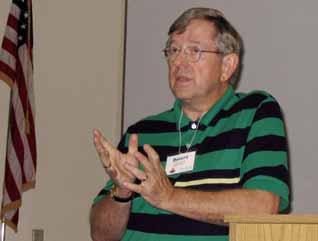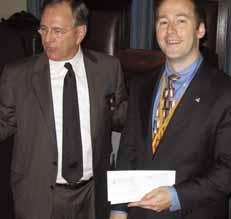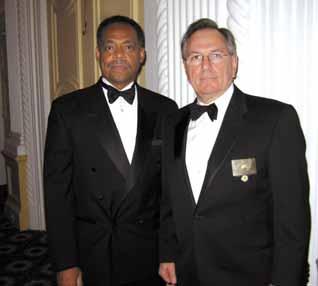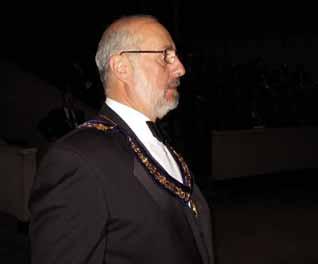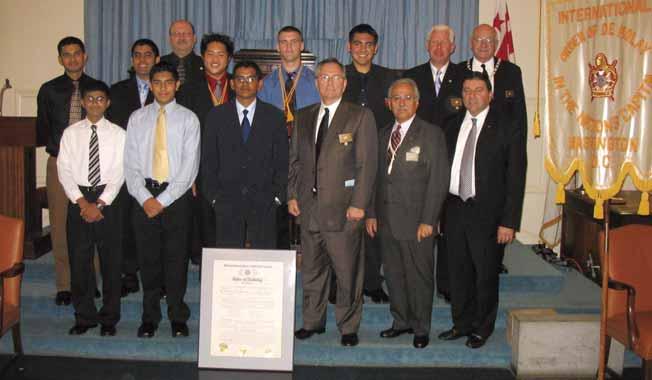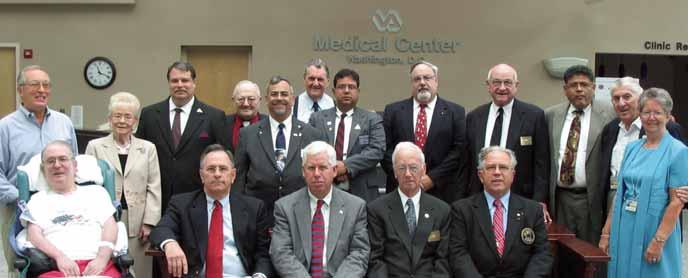
4 minute read
The Washington National Cathedral
The idea for a national cathedral is as old as Washington itself. In 1791, when Congress selected the site of the capital of the United States, President George Washington commissioned Major Pierre L’Enfant to design an overall plan for the future seat of government. Included in the plan that evolved from that commission was a church “intended for national purposes, such as public prayer, thanksgiving, funeral orations, etc., and assigned to the special use of no particular Sect or denomination, but equally open to all.”
Stewart W. Miner, Grand Secretary Emeritus
Advertisement
Largely through the efforts of community leaders such as Riggs Bank President, Charles C. Glover, plans for the Washington National Cathedral evolved, and on January 6, 1893, Congress granted a charter allowing the establishment of a Cathedral and institutions of higher learning. This charter was signed by the President of the United States, Benjamin Harrison. It was not until September 29, 1907, however, that the cornerstone was laid, at which time Brother Theodore Roosevelt, President of the
United States, spoke to the 10,000 people who were present.
The Cathedral was completed eighty-three years to the day after it was begun (September 29, 1907–September 29, 1990). Over the years leading to its completion in 1990, the Cathedral became a place for services of national focus. As mentioned elsewhere in this issue of the “Voice,” funeral services for several U.S. Presidents were conducted here. Moreover, it is the burial place for a number of notables, including Woodrow Wilson, Helen Keller, and Admiral George Dewey.
While the Grand Lodge did not lay the cornerstone of the Cathedral, many prominent Masons were among the large crowd that witnessed the ceremony. Since then, however, the Grand Lodge has, on numerous occasions, visited the Cathedral to celebrate events of national or fraternal import. As early as September 25, 1910, for example, in response to a warm invitation extended by the Rt. Rev. Alfred Harding, Bishop of Washington, the Grand Lodge participated in a special service at the Cathedral site. More than 3,500 Masons attended on that occasion.
The Grand Lodge again participated in services at the Cathedral on November 25, 1937, when under the leadership of Grand Master Paul E. Cromelin, the Grand Lodge was opened in the St. Joseph of Arimathea Chapel in a Special Communication that was called to celebrate the 150th anniversary of the compilation of the Constitution of the United States. At that time the sermon was delivered by the Rt. Rev. James E. Freeman, Bishop of Washington.
The next visit of the Grand Lodge occurred on June 26, 1949. This meeting was requested at the Semi-Annual Communication in that year by a member who wanted to honor the men and women of the uniformed forces. The lengthy procession to the Cathedral was led by Brother and Vice Admiral Harry G. Hamlet, U.S.C.G. The ceremony took place at an outdoor site adjacent to the Cathedral. Grand Lodge was opened by the Grand Master, Edwin S. Bettelheim, Jr., in Satterlee Hall on the Cathedral Grounds.
In 1957 the Grand Lodge returned to the Cathedral to observe the 240th anniversary of the constitution of the Grand Lodge of England in 1717. Grand Lodge was convened there on June 23rd to attend a service of thanksgiving. Members of the Grand Lodge, attired in their Masonic clothing and jewels, formed part of the processional. Led by the Grand Master, Ray Baker Harris, the brethren entered the Nave, already filled to capacity with Master Masons, their families and friends, and invited guests from the Federal and District of Columbia Governments. The sermon on this occasion was delivered by Brother and Rev. Edward Latch, Grand Chaplain.

Statue of George Washington inside the Cathedral. The Grand Lodge again turned to the Cathedral on May 29, 1976, where, under the leadership of Grand Master John B. Layton, the Craft gathered in Special Communication to celebrate the bi-centennial of the Declaration of Independence. The Brethren marched to the Cathedral in procession and then opened the Grand Lodge in the Bethlehem Chapel. Following the opening the Grand Lodge recessed for the purpose of moving to the Cathedral proper to attend the “Salute to Patriotism Service,” in which Illustrious George A.

Washington National Cathedral. Service in progress.
Newbury gave the principal address. Following the program the Grand Lodge was reconvened in the Bethlehem Chapel, where it was closed in due form.
The latest, but hopefully not the last, Grand Lodge ceremony in the Washington Cathedral occurred on November 17, 1990, during the term of Grand Master Charles S. Iversen. Assisted by the officers of the Grand Lodge, and their ladies, Brother Iversen was there to place a wreath at the foot of the statue of George Washington which stands in the Cathedral. This statue, Brother Iversen noted, had been placed there in the southwest corner by the Scottish Rite many years before. At its base are engraved three words: “Mason, Soldier, Citizen.”
Brother Iversen closed his remarks on that occasion by stating that “it was only proper that this Grand Lodge, recognizing the greatness of our first President during the bicentennial period, should memorialize this great Mason, whose image stands within a structure which exemplifies operative Masonry in action.” His words said it all. The Washington Cathedral personifies Masonry. And it does so continually.


